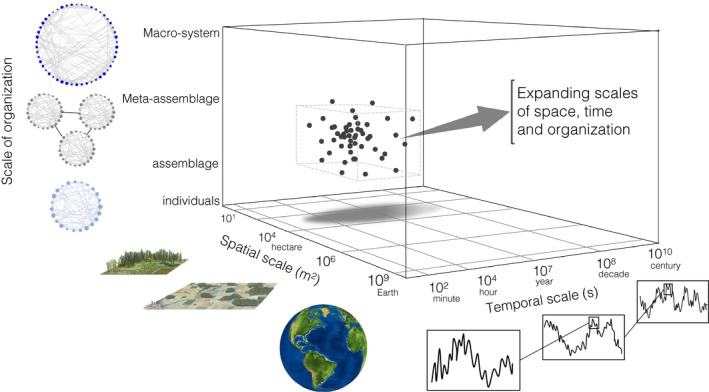Figure 1.

The three dimensions of scale in BEF research: time, space and organisation (see Box 1 for definitions). Most empirical studies in BEF (represented by black dots) fall within a constrained volume of this scale box: days to weeks in the case of micro‐ and mesocosm experiments, and years to two decades in the case of some grassland and forest diversity experiments. The size of most experimental plots is typically less than a hectare, although the spatial extent of the largest experiment was continental (BIODEPTH, Hector et al. 1999). Empirical studies could sample larger scales of variation by combining data from remote‐sensing technologies, in situ probes and buoys, surveys using long transects and geographic networks of replicated experiments with controlled perturbations at different scales, deployed for multiple years and over broad spatial extents to capture shifting gradients of environmental heterogeneity. Images of landscape and forest plot from Encyclopedia Britannica 2013.
